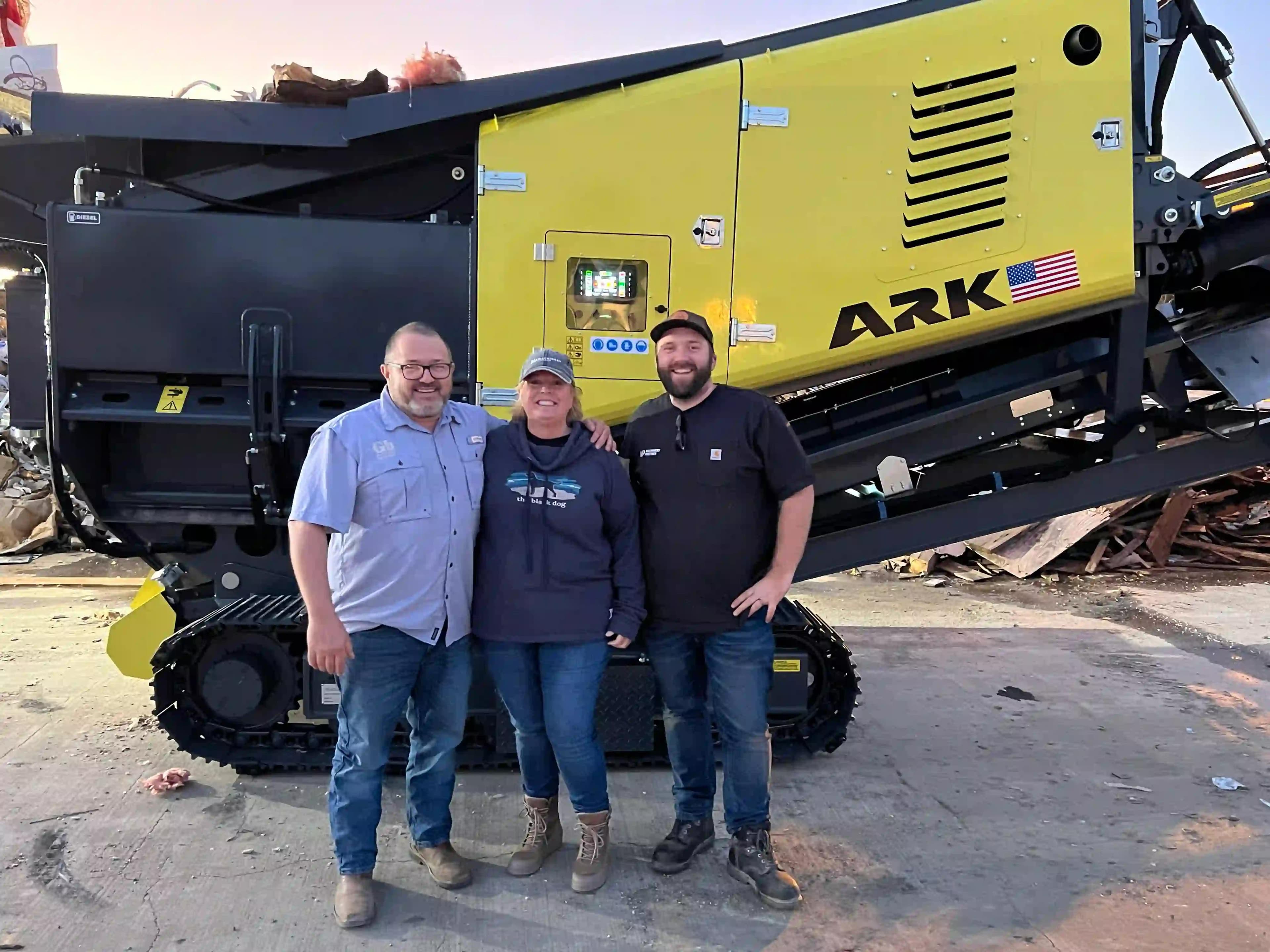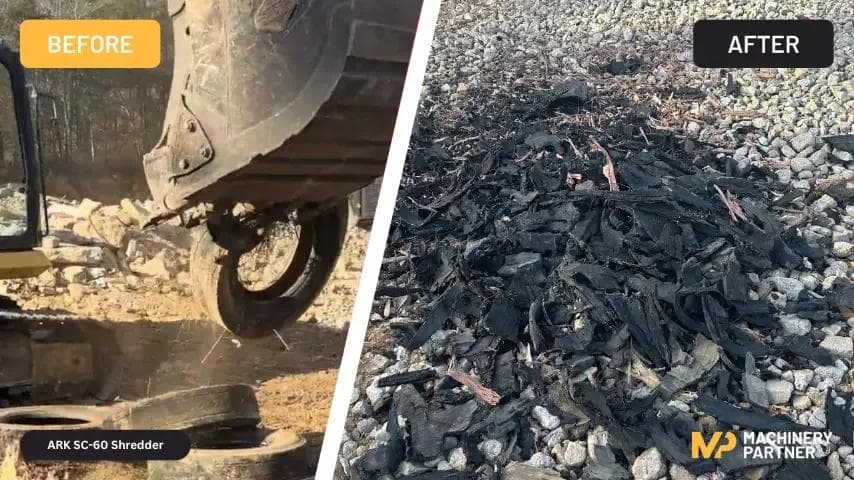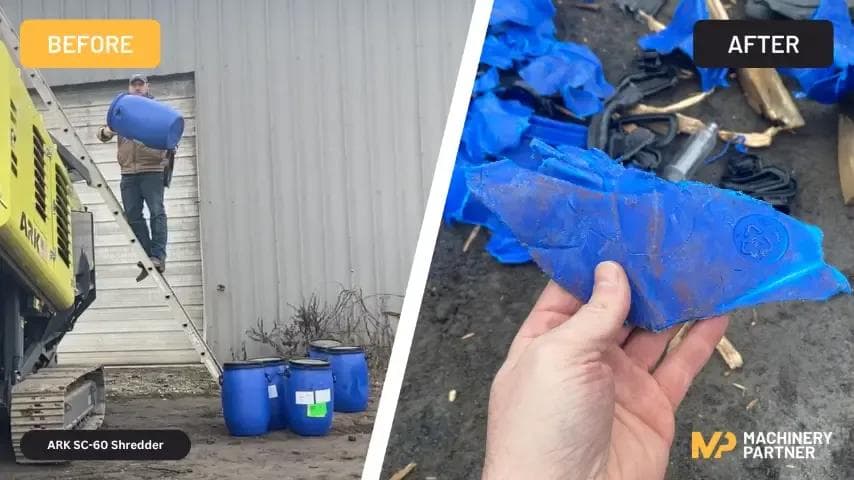Compost Shredders: A Complete Guide for Industrial Composting, Green Waste Recycling, and Organics Processing
Industrial compost operations rely on compost shredders to break down green waste, brush, prunings, pallets, and woody material into consistent feedstock for large-scale composting systems. These machines support higher throughput, improve decomposition rates, and reduce the cost of processing mixed organic waste streams. Whether operating a municipal green-waste facility, a commercial compost yard, or a landscaping supply business, the right shredder increases efficiency and supports the production of high-quality compost and mulch.

Compost shredders differ from small consumer-grade machines. Industrial shredders are engineered for continuous use, heavy-duty materials, mixed contamination, and high-capacity infeed systems. They are often integrated into complete organics processing lines that include screeners, windrow turners, conveyors, and grinders.
What an Industrial Compost Shredder Does
Industrial compost shredders reduce large volumes of green waste and woody material into smaller, uniform pieces. This supports efficient composting operations by accelerating microbial activity, improving aeration within windrows, and reducing the overall footprint needed for material storage. Shredders also allow composting facilities to repurpose brush, leaves, yard debris, and even light woody material into a consistent feedstock suitable for commercial compost or mulch production.
Common feedstock includes:
- Green waste from municipal collection programs
- Tree trimmings, prunings, and brush
- Landscaping waste and clippings
- Light woody debris
- Root balls and plant waste
- Contaminated organics that require pre-processing

Types of Industrial Compost Shredders
Industrial compost operations typically use one of three shredder categories, depending on material type and production goals.
High-Capacity Chipper Shredders
These machines combine a chipper for woody waste with a shredder for softer green materials. They support landscaping depots, compost yards, and transfer stations that handle mixed yard waste. They often feature robust chutes, heavy-duty hammers, and variable-speed infeed systems.
Horizontal Shredders for Green Waste
Horizontal shredders handle high volumes of brush, limbs, and yard waste. Their longer infeed allows continuous feeding from loaders or excavators, improving throughput in commercial composting yards. Adjustable screens allow operators to control particle size for different composting stages.
Hammermill Shredders
Hammermills are the preferred choice for producing fine, uniform compost feedstock. Their rotating hammers break down material aggressively, making them well suited for facilities producing screened compost or mulch for retail distribution.
Key Features of Industrial Compost Shredders
Industrial compost shredders incorporate several features built for continuous-duty operations and high-volume material streams.

Heavy-Duty Cutting Systems
Reinforced rotors, replaceable hammers, and impact-resistant cutting plates allow the shredder to process mixed organic waste and occasional contamination without damage.
High-Capacity Infeed Systems
Industrial machines use conveyor-fed chutes, hydraulic loaders, or excavator-feeding systems. This ensures smooth operations and reduces bottlenecks in windrow production or mulch processing.
Variable Speed Controls
Variable-speed infeed and rotor controls help optimize production, reduce wear, and allow operators to adjust particle size for compost or mulch applications.
Durability and Frame Strength
Industrial compost shredders are engineered with heavy-gauge steel, reinforced housings, and commercial-grade bearings designed for non-stop use in harsh yard environments.
Screen Size Control
Interchangeable screens regulate output size. Larger screens produce coarse biomass; smaller screens deliver fine compost feedstock.
Applications Across Industrial Composting and Recycling
Industrial compost shredders serve a broad range of commercial and municipal applications.

Commercial Compost Facilities
Shredders break down green waste into a manageable feedstock that decomposes faster and more evenly, improving overall compost quality.
Municipal Green-Waste Sites
Cities and counties use shredders to reduce brush, yard waste, and seasonal debris from curbside collection programs.
Land Clearing and Landscaping Supply Yards
These operations convert brush and woody waste into mulch or compost inputs for resale.
Material Recovery and Organics Recycling Facilities
MRFs integrate shredders to reduce volume, remove contaminants, and prepare material for windrow or aerated static pile composting systems.
Biomass and Renewable Energy
Shredded green waste can be used as biofuel, reducing landfill dependence and supporting sustainability targets.
Benefits of Using an Industrial Compost Shredder
Industrial compost shredders deliver significant performance and economic benefits for organics operations:
- Faster composting due to smaller particle size
- Higher throughput and reduced processing time
- Lower disposal and hauling costs
- More consistent feedstock for windrow or static pile composting
- Increased revenue through mulch and compost sales
- Ability to process mixed or contaminated organics
- Reduced labor compared to manual or small-scale methods

Frequently Asked Questions About Industrial Compost Shredders
What makes a shredder “industrial-grade”?
Heavy-duty construction, high-capacity infeed, commercial engines, reinforced cutting systems, and durability designed for continuous operations.
Can industrial compost shredders handle woody material?
Yes. Most commercial machines handle brush, limbs, and small branches, depending on rotor design and power.
What particle size is best for large-scale composting?
Most commercial facilities target 1–3 inch particles for ideal aeration and decomposition.
How do screens affect compost quality?
Screens regulate output size, improving uniformity and ensuring faster, more predictable composting cycles.
Can a compost shredder integrate into a full composting line?
Yes. Most facilities pair shredders with conveyors, trommel screens, windrow turners, and loaders.







